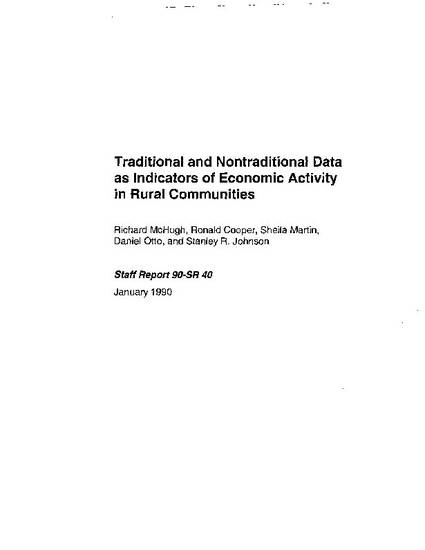
- Rural-urban divide -- Economic aspects,
- Economic indicators -- Analysis,
- Iowa -- Economic development,
- Rural development -- Iowa
The objective of this study was twofold: (1) to identify nontraditional sources of data that can be used to monitor economic activity in rural areas, and (2) to test the relationship between such data and trends in traditional measures, such as income and employment.
The need for alternative sources of data arises primarily out of the inconsistent quality and availability of traditional economic data at the subs tate level. New sources of data can help reduce this metro-rural data gap and provide a fuller picture of the diverse experience and structure of subs tate economies.
Two sources of nontraditional data were explored: state government administrative records, and data from local private and quasi-private companies, such as utilities and banks. In particular, banking data from the Federal Reserve Bank of Chicago, phone connection data from Northwest Bell (U.S. West), and food stamp program data were used. The data series consisted of county-level data for Iowa, Minnesota, and Wisconsin.
These data were statistically compared to employment growth levels in each county. Banking data (reflecting bank Willingness and ability to lend), phone data (reflecting new household and business formations), and food stamp participation correlated significantly (though weakly) with growth. The weak correlations are expected because the nontraditional data series are generally more volatile, or erratic, than employment data series. Composite indexes were constructed from the data and correlated with the employment data series.
The results showed improved correlations and suggest that such indexes may be useful as leading indicators of economic activity. Overall, the results show that there is considerable potential in the development of economic indicators from nontraditional data.

Staff Report 90-SR 40